Unsure about your French table manners? Click Here to download > > How to avoid these 10 food etiquette mistakes !
- Home ›
- Culture & Civilization ›
- Renaissance to Republic ›
- Small Unusual Museums
Surprising Small Museums in Paris (and in the Rest of France)
Published 26 December 2021 by Leyla Alyanak — Parisian by birth, Lyonnaise by adoption, historian by passion
Whenever I travel around France, I make it a point to visit small or unusual museums whenever I can, and write about them. Or ask other francophile writers to contribute their own knowledge if it's someplace I don't know.
9iiDo you like small, quirky museums that show off unusual collections?
The most famous museums are household words, like the Louvre or the Musée d'Orsay, but there are plenty of fun and unusual small museums in Paris and throughout the country that showcase things you'd never expect to see, from corkscrews to gloves to a certain type of cheese – up to 10,000 of them.
We'll never see them all but... here's a start!
NOTE: Pages on this site may contain affiliate links, which support this site. See full Privacy Policy here.
Unusual small museums in Paris
Museum Of Counterfeit Goods, Paris
Musée des Arts Forains, Paris
Paris Catacombs
Quirky museums outside Paris
Museum Of Burgundian Life, Dijon
The Lavender Museum, Provence
Gingerbread Museum, Gertwiller, Alsace
Museum Of The Laughing Cow, Lons-Le-Saunier
Palais De L'Île, Annecy
Bussy-Rabutin's Chateau, Côte D'Or, Burgundy
Musée Alice Taverne, Ambierle, Loire Département
Small museums in Paris
Museum of Counterfeit Goods, Paris
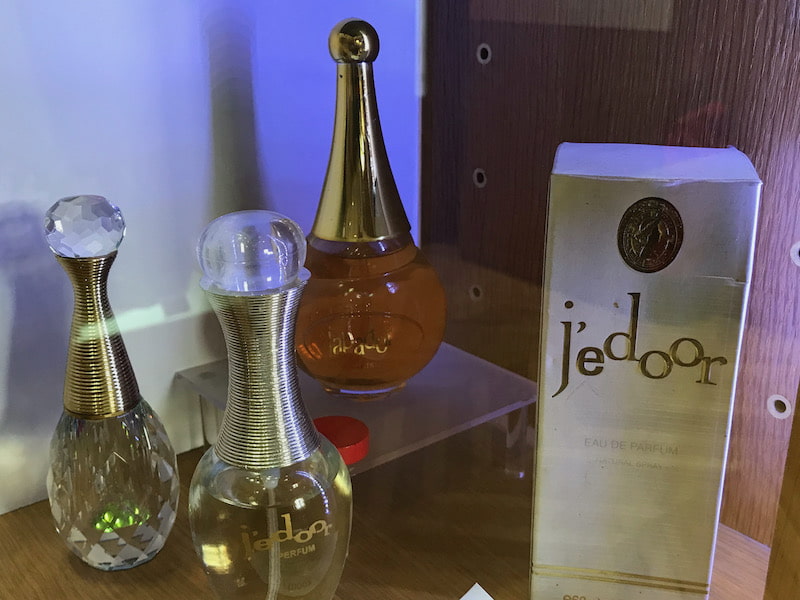
You expect some things to be imitated or duplicated, things like software or music or even car parts.
Wherever there's a market in a developing country, you'll see bottles of make-believe perfume wilting in the sun, plastic replicas of Vuitton bags (with a letter missing or mispelled) or a watch at a tenth of the price.
What you might NOT expect is counterfeit food, or fake car parts just begging to break at the first jolt.
This little Musée de la Contrefaçon is tucked away on a quiet street and is one of those small museums in Paris you could easily walk past without seeing it. Yet it will provide a fascinating glimpse into a make-believe world that is run by international criminal gangs with profits ranging in the many millions.
—16 Rue de la Faisanderie, 75116 Paris
✱ ✱ ✱ ✱ ✱ ✱ ✱
✱ ✱ ✱ ✱ ✱ ✱ ✱
Musée des Arts Forains, Paris
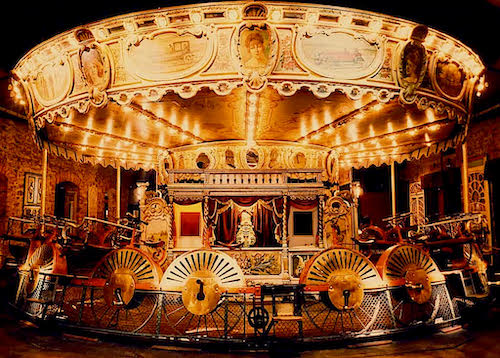
One of the most unusual museums in Paris is the Museum of Fairground Arts, hidden away in Bercy Village and known for its historic collection of old-world games, amusement park rides, and vibrant decor used in the many carnivals and circuses of the early 1900s.
And although you can’t visit the museum on your own and must pre-book a tour, an expert guide will lead you on a 90-minute visit and explain all about the history of amusement parks in Paris.
They will even let you try your hand at historic derby games and ride on a unique, bicycle carousel as you listen to music from a handmade organ.
It’s a truly one-of-a-kind experience that is not to be missed in Paris. Just note that tours are extremely limited and only available one day per week and on weekends. (Contributed by Girl With The Passport)
—53 Av. des Terroirs de France, 75012 Paris
✱ ✱ ✱ ✱ ✱ ✱ ✱
Paris Catacombs

The Paris Catacombs don't really qualify as small in size, but they are certainly unusual, quirky and off the beaten path − not to mention one of the more haunted places in Paris.
It's a museum in the sense that it displays something – in this case, bones from long-dead Parisians. When the city's cemeteries overflowed during the 18th century, a decision was made to relocate all the bones to abandoned quarries beneath Paris, and they've been here ever since.
Visiting the Catacombs is definitely one of the most unusual things you'll do in Paris...
—1 Av. du Colonel Henri Rol-Tanguy, 75014 Paris
✱ ✱ ✱ ✱ ✱ ✱ ✱
Quirky museums in the rest of France
Museum of Burgundian Life, Dijon
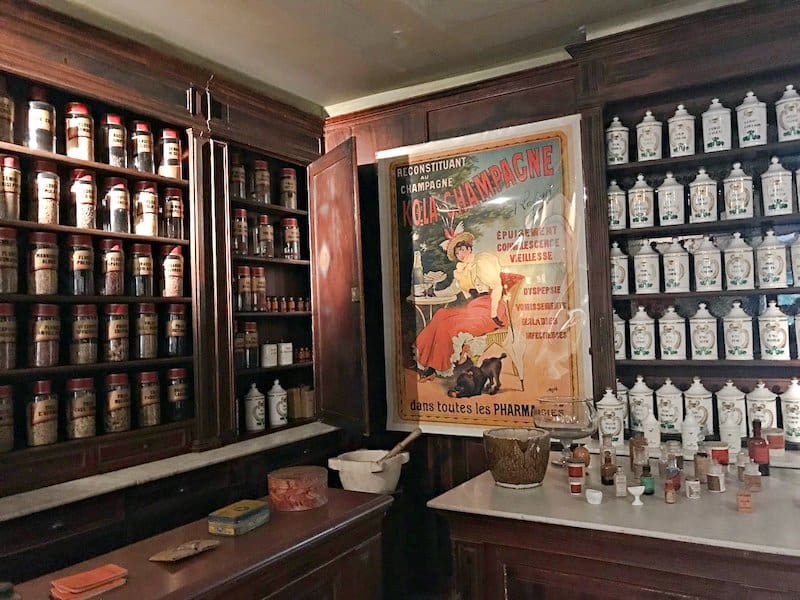
Imagine walking through streets and visiting shops built in 19th-century Dijon...
That's what the Musée de la vie Bourguignonne is all about. When you enter, it's a bit like a wax museum, with characters of all ages and several walks of life busy with their everyday lives, going to school, working, sewing – a true ethnography of 19th-century Burgundian life.
The museum wouldn't even exist if it weren't for the tenacity of a 19th-century lawyer who, concerned that he was witnessing the disappearance of traditions and objects, set out to document his regional heritage. Walking through these hallways is a voyage into Dijon's and Burgundy's past, brought to life in a way that will make you feel you're actually living it, and one of the top things to see in Dijon along the Owl's Trail.
—17 Rue Sainte-Anne, 21000 Dijon
✱ ✱ ✱ ✱ ✱ ✱ ✱
The Lavender Museum, Provence
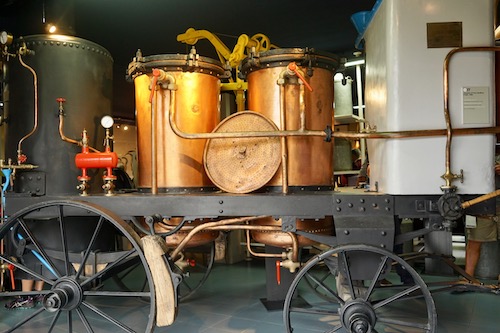
Telling the story of the region's famous crop, the Musée de la Lavande gives an insight into the importance of lavender, what it's typically used for, how it's grown and harvested, and, perhaps most importantly, how it has been distilled throughout the ages.
Run by a lavender growing family, the museum is small, but what sets it apart is that you're likely to have an interaction with a member of the Lincele family themselves. They are very active in the museum, and it's clearly a project born out of their love for the family business, and passion for growing fine lavender at their estate, the Château du Bois.
Entrance costs €8 and includes a free audio guide, and a voucher for 20% off in the accompanying gift shop full of lavender goodies. You can also visit the museum on many of the lavender field tours offered from Aix-en-Provence and Avignon. (Contributed by Le Long Weekend)
—276 Route de Gordes, 84220 Coustellet
✱ ✱ ✱ ✱ ✱ ✱ ✱
Gingerbread Museum, Gertwiller, Alsace
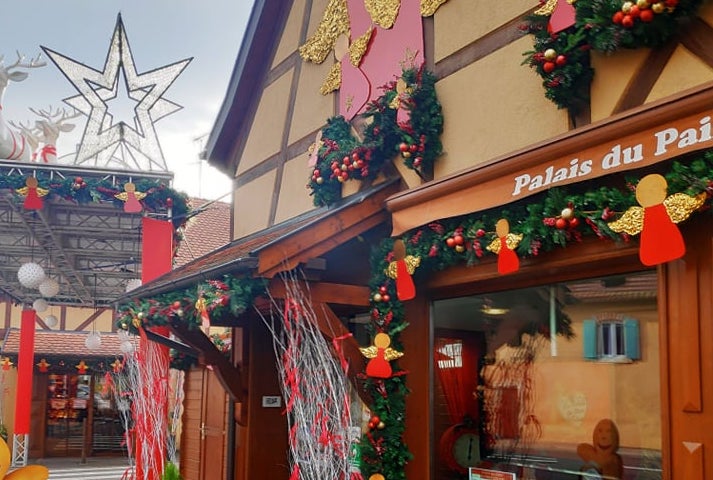
Located in the small town of Gerwiller, Alsace, the Gingerbread Palace – Le Palais du pain d'eépice – traces the history and significance of gingerbread throughout the Alsace, particularly at Christmastime, a tradition that dates back to at least 1412.
A set of loudspeakers play different stories in each room as you walk through. In the final room, the bakery, you are able to view gingerbread being decorated by talented artists and enjoy a tasting while you watch.
Next door to the museum is the Fortwenger shop, selling what has become France's Number 1 gingerbread. It comes in many types, from iced to flavoured (the flavoured ones can be a bit of an acquired taste) and so many different decorations for you to purchase.
There are table cloths, oven mittens, cooking utensils, kitchen decorations, Christmas decorations and of course, all the gingerbread you could ever want! (Recommended by Bec from Explore Victoria)
—110 Rue Principale, 67140 Gertwiller
✱ ✱ ✱ ✱ ✱ ✱ ✱
Museum of the Laughing Cow, Lons-le-Saunier
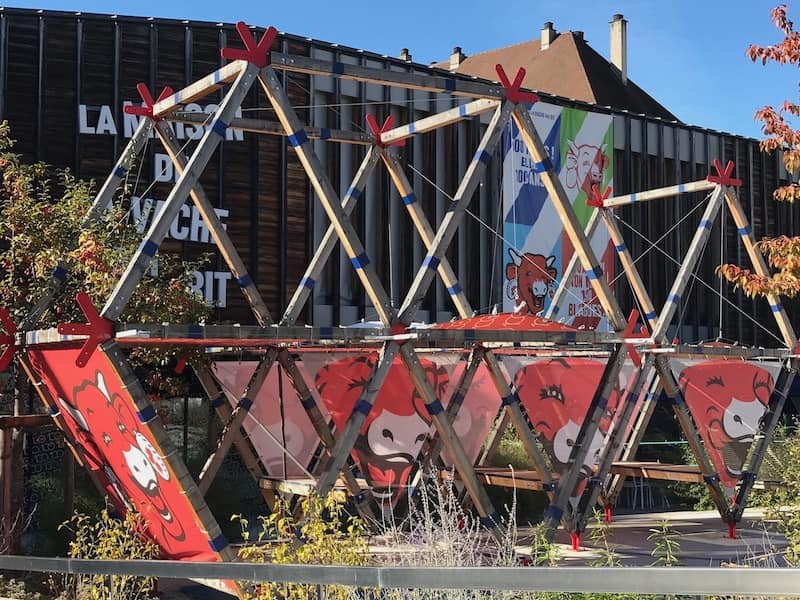
Some museums are so quirky they'll elicit a smile − and this is one of them.
Yes, a museum dedicated to the Laughing Cow, or La Vache qui rit, which happens to be everyone's favourite cheese (even those who won't admit it).
It's also one of the world's top 10 foods.
One of the most intriguing displays involves the evolution of the design of the cow − it wasn't always red, and it didn't always have its iconic earrings. The museum walks you through the evolution of La Vache qui rit, but more than that, it's actually a track record of early 20th-century marketing, tracing the evolution of such things as advertising billboards, branding, logo design, and sales. The family that (still) runs the company experimented with new methods and ended up becoming business leaders, whose methods still provide leadership today.
Bottom line: this small museum is fun, an unusual look at a product one would not initially think is worthy of a museum. But oh it is.
―25 Rue Richebourg, 39000 Lons-le-Saunier
✱ ✱ ✱ ✱ ✱ ✱ ✱
Palais de l'Île, Annecy
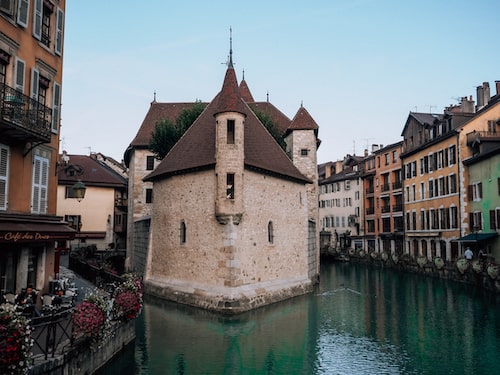
One of the more unusual things about this museum is its shape.
Located in the middle of the famous Thiou Canal in the picturesque town of Annecy, this ship-shaped building has in turn served as a prison, courthouse, and administrative center.
Built in the 1200s, it is now home to a museum that illustrates the history of this unique structure’s past. There are also details on the history of Annecy and the surrounding area.
The best thing about Palais de L’île has got to be its Medieval architecture, but it is often difficult to see through the hordes of tourists outside taking what is probably the most iconic photo of Annecy. This is a smaller museum and won’t take you more than an hour to explore. (Contributed by France Voyager)
—3 Passage de l'Île, 74000 Annecy
✱ ✱ ✱ ✱ ✱ ✱ ✱
Bussy-Rabutin's Chateau, Côte d'Or, Burgundy
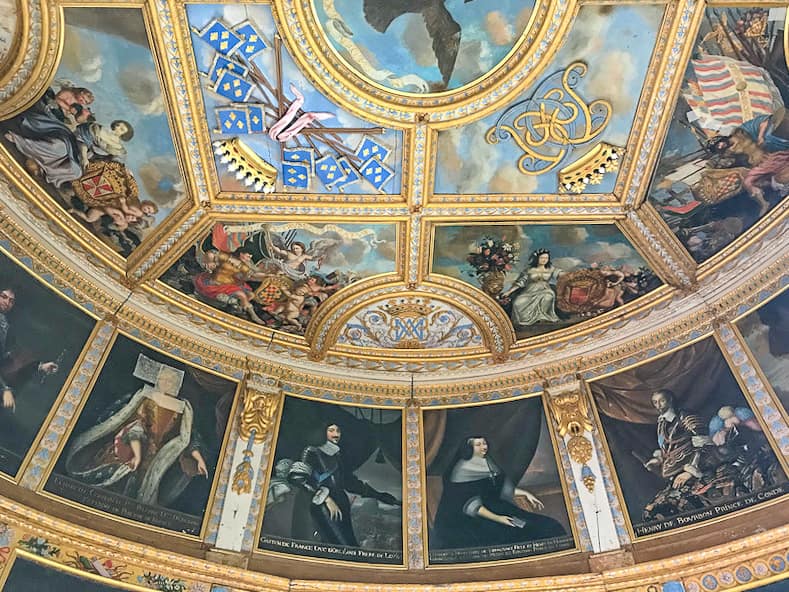
This may technically be the Château de Bussy-Rabutin, but it is in truth a museum.
Count Bussy-Rabutin was a popular member of the court of Louis XIV, a high military official, who irked the king by organizing an irreverent orgy and was exiled as a result. He was temporarily rehabilitated, but managed to anger the king again by writing a satirical pamphlet about the romantic shenanigans at Versailles.
This time he was sent home for good, and spent his days collecting and commissioning works of art depicting the people he missed at court − and those he couldn't stand.
Throughout the château, some 500 of these portraits will stare at you from every wall, with rooms dedicated to different types of acquaintances: kings, men of war, ladies of the court, along with a room full of clever verses subtly deriding those they described.
While the art may not be world class, the ensemble is both agreeable and enlightening.
―12 Rue du Château, 21150 Bussy-le-Grand
✱ ✱ ✱ ✱ ✱ ✱ ✱
Ideal Palace of Facteur Cheval, Hauterives, Drôme
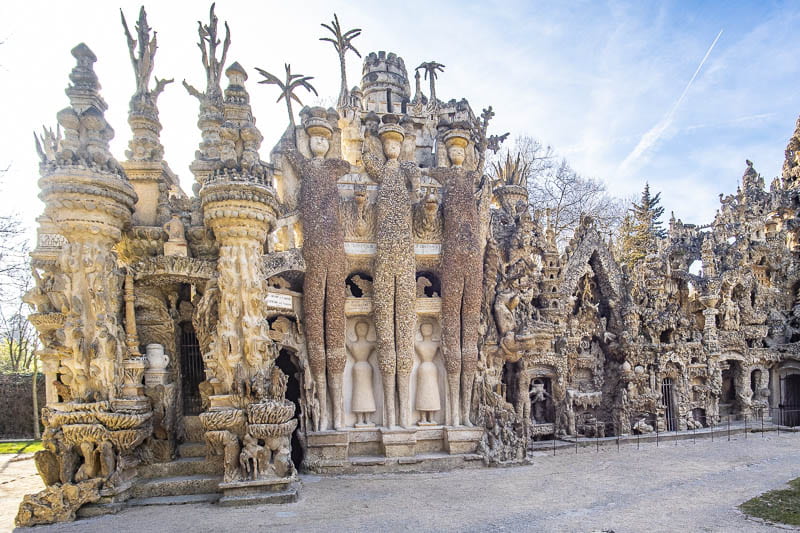
This is perhaps one of the most unusual buildings in France. Built stone by stone by a rural postman, he braved criticism as he singlehandedly carved his palace.
It all started when he tripped over a strange-shaped stone and brought it home. And then found another. And another. Soon he was piling up his stones and began shaping his "dream palace" in the evenings, after work.
It took him 33 years to finish, and you can read more about the Ideal Palace here.
―8, rue du Palais, 26390 Hauterives
✱ ✱ ✱ ✱ ✱ ✱ ✱
Musée Alice Taverne, Ambierle, Loire
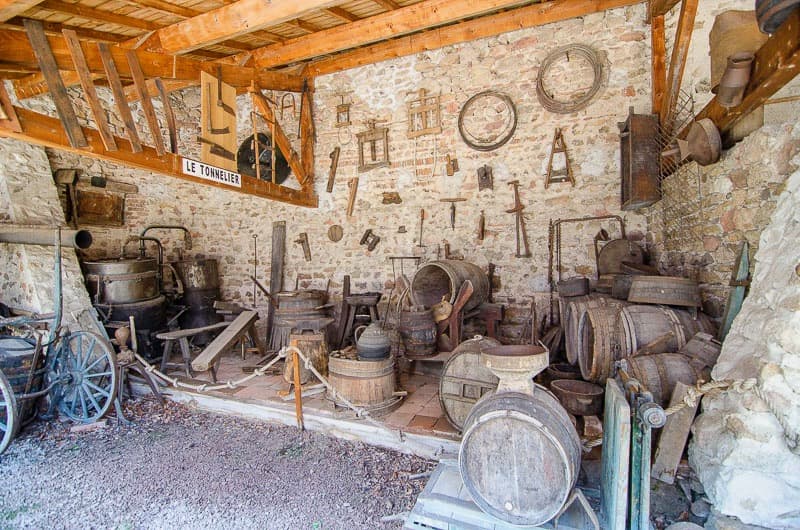
This magical museum is all about how the French lived 100 years ago in this region just west of Lyon.
The museum bears the name of Alice Taverne, a woman with what might be considered an unusual occupation for a woman. She was, in a way, a social archeologist.
Madame Taverne was a local woman fascinated by history. She began collecting everyday objects used between 1830-1930 by local people in the Roannais and the nearby Forez regions of the Loire départment. And room by room, she built her museum.
Inaugurated in 1951, the museum is laid out like a house, with antique-filled rooms set up just as they might have been if people still lived in them but perhaps the most unusual collection is out of doors. In a crowded courtyard, arcades have been set aside for equipment once used by blacksmiths, vintners, cartwrights, cabinetmakers and farmers.
―89 Rue de la Grye, 42820 Ambierle
Pin and save for later!


